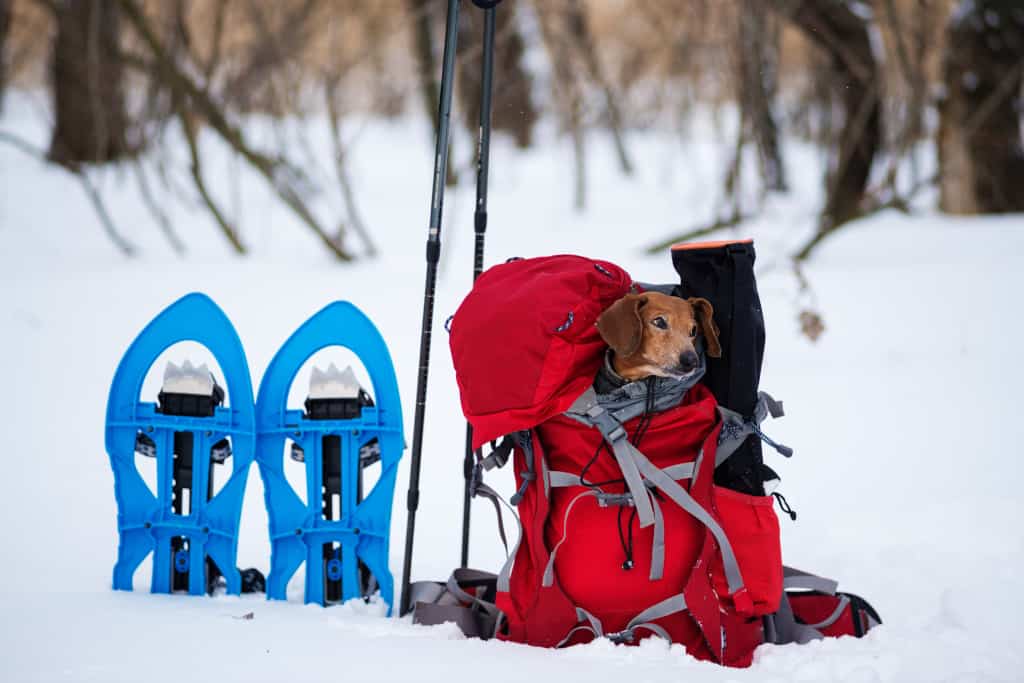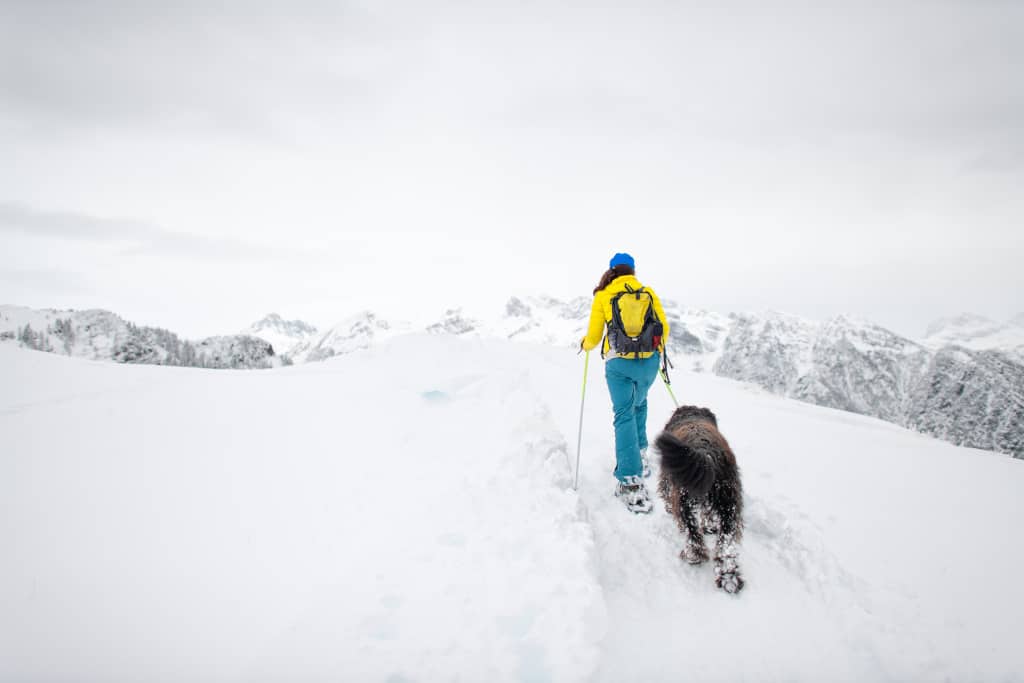It’s that time of year again. The snow is falling, the cold winter winds are blowing, and many people are starting to snowshoe! Unfortunately, while snowshoeing is indeed a fun outdoor activity in winter, and you really want to bring your pup along, not all dogs make good candidates.
So, before you put those dog snowshoes on your canine or apply winter dog paw balms to their feet and take them on hikes during the colder months, take a moment to assess whether they would be an ideal snowshoeing partner so that there won’t be any surprises.

Your Dog’s Breed
Your dog’s breed is a factor to consider when it comes to snowshoeing. Small dog breeds may not be able to keep up with you if you’re moving quickly through deep snow, especially in extreme cold conditions and severe weather. Plus, snow cover in some areas may be too deep for smaller dogs to navigate.
Also, brachycephalic breeds (those with short muzzles), such as Bulldogs, are not a great snowshoeing partner as they may have a hard time breathing in cold temperatures. But if your small pup or short-snout dog insists on joining you on your snowshoeing adventure, consider getting a dog backpack carrier to carry them on your back instead.
Your Dog’s Coat
Some dogs like Siberian Huskies are great for snowshoeing because their coats can keep them warm. And Border collies, with their double coat, also make an excellent snowshoe partner, as they can stay out in the cold without getting too chilly or chilled. I bet you see what I am trying to say here.
The general idea is that longer-coated dogs are better suited for snowshoeing because they’re more insulated and can move through the deep snow without being in danger of frostbite, hypothermia, and other cold-related injuries.
Don’t get me wrong. If your short-coated dog has a similarly high spirit of exploration and loves the snow as much as you do, you can still bring them along as long as they are equipped with appropriate dog gear like an insulated dog jacket and a winter dog snood to keep them warm.
Your Dog’s Age

It’s tempting to want to bring your pup on a snowshoeing adventure, but when they’re still in puppy mode, it might be too much of an ordeal.
Why? Because puppies are susceptible to cold weather due to their inability to regulate their body temperature properly. And most importantly, their bones and joints are not yet fully grown. If an injury occurs at this early stage, their growth plates may be affected and can lead to permanent damage.
A good rule of thumb is to wait until your little guy’s second birthday or so before taking them on a snowshoeing trip with you.
And what about older dogs? Senior canine citizens aren’t good candidates, either, because they don’t tolerate colder climates well. Plus, they may suffer from joint pain and health conditions that could make walking over snow and ice unsafe (e.g., eye problems). So, older dogs, especially those who have medical conditions, should skip this winter activity!
Read More: Top 17 Winter Dog Care and Safety Tips
Is Your Dog in Good Physical Shape ?
While snowshoeing is fun for snow-loving dogs, it can put lots of pressure on their muscles and joints. So before you bring your pup out for hikes in winter, make sure they are in good physical shape.
Ask yourself: is my dog physically fit, and does my dog have any joint problems? If you notice signs of stiffness or if they are quickly exhausted after only a minute or two of vigorous activity, it’s best to scale back and exercise your pup indoors instead!
Read More: How Cold is Too Cold for Dogs to Hike or Walk Outside?
Does Your Dog Know How to Walk Nicely on a Leash?
If your pup loves yanking on a lead because they want to chase after squirrels or due to them having an overly excitable personality, then it’s probably best you give this one a pass until you’ve taught them leash manners. As you can imagine, dogs who pull on a leash while snowshoeing are not only stressful but can also be dangerous for both the dog owner and their furry pals.
The best way to train your dog to stop pulling? Invest in a high-quality no-pull harness for dogs, which will not only reduce the amount of pressure on your fido’s neck but also allows you to control their movements while on a walk.
Keep in mind, though, loose-leash walking is not the only thing your dog needs to learn. Like hiking with your four-legged friend during the warmer months, there are some basics and must-know commands you have to teach your dog.
Conclusion
So, is your furry friend the right snowshoeing partner? If so, then what are you waiting for? Grab your gear and hit your nearby dog-friendly snowshoeing trails! Have fun and stay safe!

